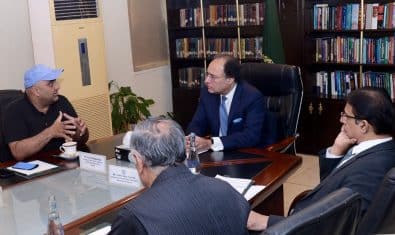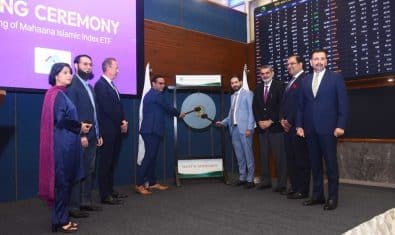Amid the political turmoil, throttled internet access, inaccessible apps, a depreciating currency, payment delays, cash flow constraints, high borrowing costs, and brain drain to the Commonwealth realms, Pakistan’s advertising industry risks growth coming to a halt.
The current account deficit (CAD) crisis awoke the realization that the advertising industry hurt the nation by directing advertising expenditure (AdEx) towards foreign platforms and apps lacking a local financial office.
With advertisers getting a taste of advanced digital measurement methods, the mainstream media industry must play catch-up if it hopes to capture digital AdEx.
Despite significant increases in digital and e-commerce during Covid-19, digital spend on average is only 15% of the total AdEx, and for quite a few brands, spend on digital remains in single digits,” said Naveed Asghar, the CEO of GroupM Pakistan.
“In five years, I estimate that digital will constitute over 25% of the AdEx,” he added.
Media Industry Exodus
In a recent interview on the Talha Ahad podcast, Z2C chairman Raihan Merchant said that the reason TV channels fail to produce unique original content – akin to Ainak Wala Jinn – is that they are seeking guarantees on advertising before taking the leap of faith.
Meanwhile, the mass exodus in the broadcast media industry – due to the 2018 government curtailing government spending on TV advertising – was enough proof of the rent-seeking mindset of the broadcast media space.
Like most elite capture institutions in the country, the broadcast media industry expects the government to subsidize and keep them afloat using taxpayers’ funds. This creates a cycle of complacency and comfort with the status quo, whereas downturns incentivize new ideas and innovation for survival. Due to this reality, even regulators are asleep at the wheel.
The regulator issuing channel licenses should mandate internet protocol television,” said Farhan Khan, the CEO of Brainchild, which owns creative, media, and public affairs agencies representing the Publicis Groupe in Pakistan. “They should push for the hybrid approach, delivering broadcast TV over platforms like DTT, satellite, or cable, and on-demand and interactive content over broadband,” he said.
In the week that digital media apps were offline or inaccessible to most advertisers, broadcast media leaders were baffled to learn that none of those intended funds were redirected toward their inventory.
The root of the issue is that the broadcast media industry of Pakistan has failed to innovate or evolve to a point where it becomes a medium that has tracking & attribution akin to its digital counterpart.
“As long as you know how to package your proposition in a compelling manner and put it across the right platform and in the most effective and efficient way, you will get the best results. Having said this, the starting point has to be the right consumer insight upon which your proposition is built,” stated Asghar.
The Problem With Ads
The root of the consumer insight issue comes with the television audience measurement (TAM) methodology that the entire industry – advertisers, agencies, or media sellers – relies on as indisputable truth. Khan said that every advertising medium needs multiple measurement currencies instead of an existing monopoly. In the case of broadcast media, this usually refers to MediaLogic.
The sample size representation has to be enhanced, at least in Pakistan’s urban and semi-urban cities, with a tier-based representation, which is not there,” said Khan. “The private association of television and radio broadcasters in Pakistan should also enhance the adoption of emerging technologies and push for developing OTT branches,” he remarked.
He said that the Pakistan Advertisers Society should hold workshops and sprint sessions with its members to foresee the future of the media & advertising space, with speakers advocating for enhanced TAM and the adoption of internet protocol television and over-the-top (OTT) branches.
As audiences on owned OTT platforms grow or all channels consolidate digital streaming with a locally owned OTT, Khan insisted the industry can play a part in mitigating the CAD to ensure advertising expenditure dollars are not leaving the country.
“We need a representative body for the media agencies in Pakistan to debate the steps needed for the industry’s future, agree on a roadmap, and then advocate the supply side of the equation, including the regulators,” said Khan.
“Said body will commission studies to understand the Pakistan-specific issues covering brand safety and ad fraud; identity, data, consumer privacy; and ad experiences and measurement,’ he pointed out.
Solution and Way Forward
Khan said that advertisers need to identify vital media supply chain issues related to transactions and discuss how best to create the frameworks for brands, agencies, and publishers to engage directly with consumers in an increasingly fluid and measurement-constrained marketplace.
Amid the dominance of YouTube, capturing digital AdEx will require a locally created OTT media service that rivals YouTube and offers local broadcasters and content creators better revenue share.
While disparate examples exist, such as PTVflix, there isn’t a singular alternative OTT where all creators and broadcasters are present. For this to happen, the Ministry of Information & Broadcasting (MoIB) would work with Pakistan Electronic Media Regulatory Authority (PEMRA) to mandate the creation of an OTT under a public-private partnership with an accelerator.
Advertising agencies would be directed to shift their AdEx to this OTT and mitigate the damage caused to the CAD by sending money to platforms owned by Google and Meta.
When broadcasters and content creators know deal flow will come from a presence on the locally owned OTT – with earnings transparency and better returns – industry sources told ProPakistani that two things will happen. The first is the surge in creators in the locally owned OTT supported by MoIB and PEMRA.
The second is that companies such as Google, Meta, Bytedance, and Snap Inc will take notice and initiate creator funds to attract or retain creators. They will also have to raise the revenue they share with creators and lock in agreements around guarantees.
These companies will also re-engage agency resellers and holding groups to offer better deals directing AdEx towards their platforms.
This is where regulators, trade bodies for agencies, and associations for advertisers will need to take a stand and only resume ads on foreign platforms if they set up local financial offices and invest in the country for more profound creator and media innovation.
They must align with a national agenda that directs more of the digital AdEx to the locally owned OTT than foreign platforms.
Such measures will usher in a new competitive landscape for the media and advertising industry, rewarding those that out-innovate and collaborate with their stakeholders.


























